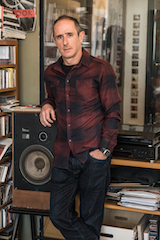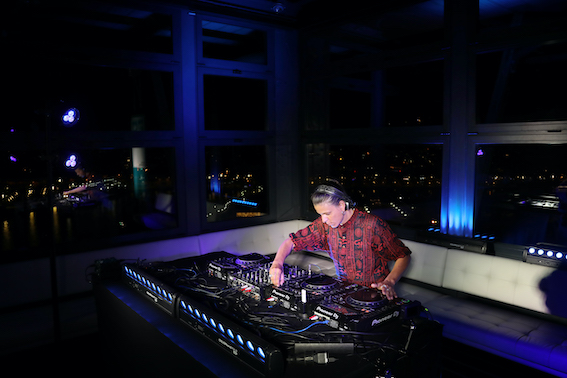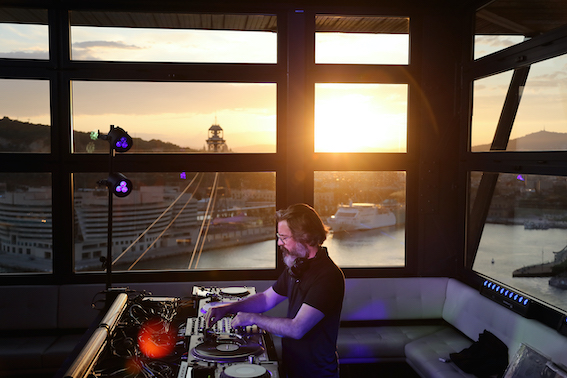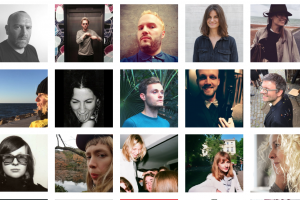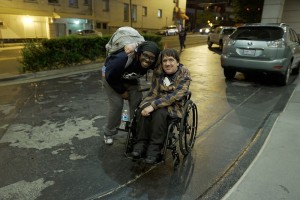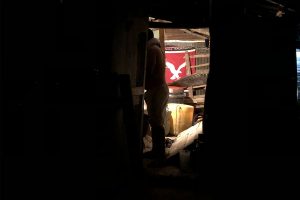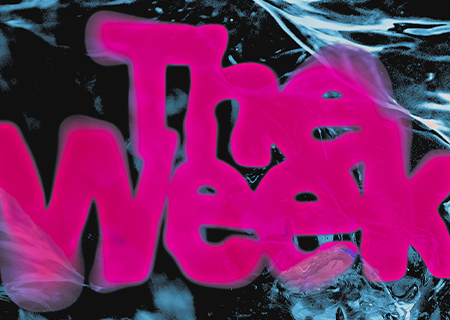Sonar 2020 / “During the lockdown, music really has shone a light through the darkness”
Originally Sónar festival should have made its comeback to the original June dates (after a one off July appearance in 2019), but then Covid-19 changed the plans and the festival was postponed to 2021 – this decision was flanked with the installment of a Sónar+D CCCB edition for September. A good move as this gave the team the necessary time to come up with a very impressive hybrid incarnation. A lot of the performances and talks are available on the youtube channel of Sónar and highly pointed out for an intense home session.
Enric Palau, the booking director of Sónar, was so kind to answer some questions for our series on festivals in the year of Corona.
Enric, how did you personaly experience the 2020 edition of Sónar Barcelona?
It has to be said that it was a very different experience, but positive overall. Sónar has become increasingly hybrid in recent years as the technology has evolved, and in some ways we were prepared for this change. But of course there were new challenges with conducting a true hybrid event. Part of this was technological – creating the website and communicating the online activities, but there were also creative challenges in terms of how we could realize artists’ visions in the best way for hybrid performances.
I’d say the biggest challenge was to curate and adapt the content into an online platform with two simultaneous channels and over 30 hours of continuous stream. But we’re really pleased with the result in that we were able to create a truly global event, bringing together the Sónar community with artists all over the world. From Nicola Cruz in Quito, Daito Manabe in Tokyo, Holly Herndon and Richie Hawtin in Berlin and more.
How was the feedback from outside: from artists, their teams and audience?
There was a real sense of community this year from the artists and their teams. The pandemic has affected all of us this year, and we’re all facing similar obstacles at the same time, so the response was really one of ‘how can we provide the best possible content in this situation’. In many ways the situation became an opportunity for artists and djs to approach their shows differently, to think about how they could use the space differently without an audience, and some of the results were really fascinating. John Talabot’s set with 360º visuals by Desilence is a good example of this. Judging from the comments and feedback we’ve received, our audience reacted really well to this approach, which worked especially well online.
Do you remember when you first heard from Covid-19?
At the beginning of the year we were following the news along with everybody else, but the first time we realized how disruptive it was going to be was around the time of Sónar Istanbul in early March. At the time there were no reported cases in Turkey, but travel was already becoming difficult for artists.
When did you realize that this will stay with us for longer – Spain was one of the countries hit the hardest by the pandemic in Europe –, and by that for so long that it has a direct influence on your festival in 2020 (and maybe even 2021)?
Like everyone else we’ve been following the situation as it evolved, and responding as best we can to the new regulations. Obviously the lack of forthcoming information has made any decision more complicated, but we’ve tried to be as open with our public as possible, as soon as we heard of new developments regarding regulation of the event and what that might mean.
Mentioning the heavy impact the pandemic had on Spain, has there been discussion to cancel the festival in total cause of that?
Our first responsibility is to our festivalgoers and team, so health concerns have come first in any discussions about how to deliver the event. With that in mind we’ve been focusing on how best we can create alternatives that fit the spirit of the festival, without compromising on quality. This was the thinking behind our hybrid event in September and is also behind our planning for future events. As you know though, it’s a constantly changing situation.
You decide to go for what we now call a hybrid festival, besides performances and editorial content exclusively produced for the net, you also did put on phyiscal shows in venues in Barcelona.
You feel that this dual strategy worked out well?
Alongside the specially recorded video performances and capsules that were part of the online event, we hosted 3 live shows per evening at Barcelona’s CCCB, which was actually the original home for Sónar by Day. All of the talks and workshops on the program were also hosted at the physical venue, and we applied the same level of production as we would to the program on a typical year. There were two reasons that hosting these live events was important to us. Firstly, although attendance was much reduced for health reasons, we wanted to allow the local community in Barcelona to experience live music and talks in some form. And secondly, for the international online audience, we wanted there to be a recognizably ‘Sónar’ experience.
This hybrid edition of Sónar Barcelona seemed to me as extensive as the regular editions of the last year. But of course you did not implement all scheduled events into the new outfit. Can you explain a bit how the final digital lineup was composed from what you had originally scribbled?
The idea for Sónar+D CCCB was not to replace the festival but to create a new hybrid event that was free for all to experience. In total we programmed 130 activities, talks, shows and performances. We’d allocated half of this for live shows – so, we could only invite a part of the artists we had confirmed for Sónar 2020. We were inspired by how well the invited artists responded to the change in the nature of the event, either by adapting their shows – Arca’s Live DJ set or Max Cooper’s Live AV from London – or providing us with brand new content more suited to the new concept – Sega Bodega or Ms Nina for example. A number of artists with long term links to the festival such as Richie Hawtin, Daito Manabe, Ryoji Ikeda or Niño de Elche, also agreed to be involved in this new format. It was also important for us to place a special focus on local electronic acts from Barcelona in the surrounding area, as it’s these smaller artists who have really suffered as a result of the pandemic.
As a side note – we’re currently working on carrying over a majority of the previously announced shows for Sónar2020 to the 2021 event.
The festival is still digitally available. Do you see a steady stream of interest in this archive?
Yes. Keeping as much of the program as possible online was really important for us, as it allows the festival to have a new life outside the dates and physical location. Discovery is a big part of what makes the festival special, and if we can adapt this to the online world as well, by making it easier for people to discover content that’s interesting to them but may not have been on the radar, then that’s even better. Let’s use the algorithms for good!
Are you happy with the numbers in general – people attenting the events via website and social media and archive visits?
Yes we are happy with the numbers. But we are still learning, and we see potential to increase the audience within these formats. But more than the figures, we’re satisfied with the process of having created this event, what we learned along the way, and the new ideas that we can incorporate into the future of Sónar.
I ask as to me it seems a lot of well established festivals are having a hard time to attract their aucience for the digital programing – which is totally understandable as they are primarly live events and not a media outlet.
In regards to your insight on other festivals, I don’t think one can underestimate quite how disruptive the pandemic has been. It’s not only live music that’s been affected but the entire way we produce and consume culture online. Artists, promoters, teams, media outlets and consumers, are all experimenting and adapting right now, so what might have worked in the past in terms of digital content, might not be working right now, or in the same way.
Besides getting the attention of the people in the first place, the next and even bigger challenge is to keep them with you. One has the tendency to stroll from one stage to another or one venue to another at festivals, in the digital world we switch channels even faster. How did you experience the festival regards this?
This is such a good point and something we tried to keep in mind when creating the online part of the hybrid event. Like you say, it’s natural to want to ‘click away’ – and in a festival you’d actually wander to another stage. We tried to recreate this online with two channels that worked as virtual stages – one for the talks and shows from CCCB, and another with the live stream of DJ sets taking place from Torre D’Alta Mar. We organized this live stream, which took place for 12 hours each day with DublabBCN, as a dedicated space for many of the local dj’s who were already booked to play at Sónar 2020 in June.
- Troya Modet (Photo: Leafhopper)
- HUMA (Photo: Leafhopper)
- Davi Blue (Photo: Leafhopper)
Do you feel supported well by the local and state politics?
In general yes. We were able to use part of the local public funds that had been earmarked for Sónar2020 for our hybrid event, which wouldn’t have been possible otherwise. Internationally, we also benefited from our involvement in the We Are Europe project.
I guess you do watch a lot of the activities of other festivals like MUTEK, Unsound, Atonal, c/o pop…. Can you name some of the events / formats that catched your eyes? Did you get inspired for your own acitivities by some of them?
The planning for our hybrid event started in April, so by then we already had a date confirmed in September and a fairly clear idea of how we were going to approach this. But of course, we have been following what our colleagues are doing with great interest. Seeing the different creative approaches and the overwhelming desire to get culture out there in some form has been one of the few positive experiences during the pandemic.
I was especially impressed by our partners in Sónar Mexico (and Ceremonia Festival) ’s virtual event hosted with Sansar. It was the first proof that I’ve seen that an AR event of this kind in a gaming environment can work with a large audience.
Last question, as music is the healing force in all of this: what is your favorite track / song in 2020 so far?
2020 has felt like many years rolled into one, with all the uncertainty, change, ups and downs on a personal and professional level. But during the lockdown, music really has shone a light through the darkness. There has been so much good music this year, Sega Bodega, and WAP of course, but a number of songs on Jessie Ware’s album, especially In your Eyes, really gave me a sense of hope. And I would also add that Jayda G’s Both of Us is the track that makes me miss the dancefloor most.”







